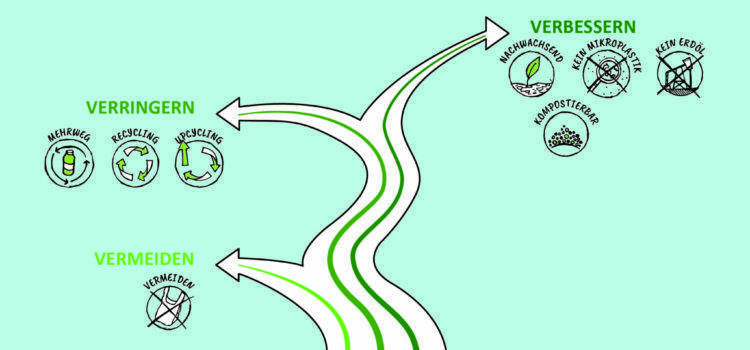
Bioplastic - Is bioplastic the environmental solution for the world?
Will bioplastic save the world? Is bioplastic the environmental solution? Of course not. However, is bioplastic the solution to the packaging problem and the problem surrounding microplastics?
Here is the answer:
Avoid – Reduce – Improve
In order to solve the packaging problem, the “three Vs” approach must be followed: avoid – reduce – improve. First of all, of course, as much as possible should be avoided on packaging in order to keep the negative impact on our planet as low as possible.
If avoidance is no longer possible, packaging must be reduced. An important measure for this is the conversion to reusable systems. Reusing can save a lot of resources. Finally, the next best step is to recycle or upcycle packaging. This means that the raw materials used are returned for a new production. With upcycling, the discarded material is even upgraded.
If the use of fresh raw materials is ultimately unavoidable, then an ecological improvement should take place. Ie raw materials exchanged with more sustainable raw materials. Natural plastic from NaKu is an example of this. With the use of renewable and natural raw materials, CO2 emissions are reduced compared to plastic or paper. Furthermore, due to the ability to compost, there is no risk of microplastic pollution.
MikroPlastik
Microplastics have now become a very big problem. It gets into the environment in many ways, such as tire abrasion or the weathering of plastic waste, and disturbs the ecological balance there. Over 8 million tons of plastic end up in the sea every year. Scientists predict that by 2050 there will be more plastic in the ocean than fish. Once in the sea, it never disappears. In the meantime, microplastics have also been detected in fish and mussels. Microplastic particles also get into our food via drinking water and food. But also through the air we breathe.
The dangerous thing about microplastics is the increased concentration of pollutants around these particles. These attract pollutants like a magnet. This is why every person ingests an average of 5g of microplastic particles per week. If they are small enough, they can also get into cells and the brain. With them the pollutants.
The solution to the problem has already been mentioned above. However, bioplastics can partially contribute to the reduction of microplastic emissions. NaKu therefore relies entirely on the use of biodegradable plastics, as it is also the responsibility of companies to protect society and our planet from dangers.
